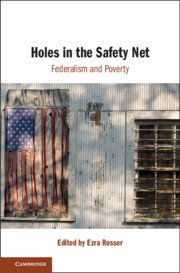1. Lisa R. Pruitt, Migration, Development and the Promise of CEDAW for Rural Women, 30 Mich. J. of Int’l. L. 1 (2009). Abstract below:
This Article explores the potential of international development efforts and human rights law to enhance the livelihoods of rural women in the developing world. In particular, the Article takes up the Convention on the Elimination of All Forms of Discrimination Against Women (CEDAW), which enumerates in Article 14 specific rights for rural women as a class. Pruitt’s focus here is on Article 14’s guarantees in relation to land ownership, education, development planning, access to credit, marketing facilities and technology, and other rights that are linked closely to women’s role as the architects of food security. While CEDAW has attracted enormous attention among legal scholars in the decades since its inception, Pruitt’s is the first scholarly article to focus on the Convention’s attention to rural women. To better understand the potential of CEDAW in relation to this particular population, Pruitt examines the drafting history of Article 14, as well as the most recent country reports of four Member States: China, Ghana, India, and South Africa.
Written for a symposium called “Territory without Boundaries,” Pruitt’s discussion of CEDAW’s Article 14 is situated in the context of massive rural-to-urban migration worldwide. Indeed, its publication comes just months after demographers report that, on a global scale, urban dwellers began to outnumber those living in rural areas. As globalization creates conditions that induce migration, causing the populations of cities to burgeon and their territories to sprawl, those same forces shape rural places, too. Although that which is rural is often thought of as quintessentially local, rural livelihoods around the world are buffeted by economic restructuring, migration, and climate change. Pruitt thus considers CEDAW in relation to migration’s consequences for the women who are left behind. Among these consequences are enormous challenges, but also opportunities for change and empowerment.
Pruitt’s analysis raises several broad, structural issues. The first is the impact of rural spatiality—including a relative absence of formal legal institutions and actors—on the ability of rural women to realize the promise of international instruments such as CEDAW. The second is the extent to which development entails or encourages urbanization and how CEDAW’s vision for empowering rural women might influence the trajectory of development efforts. The third is the wisdom of development strategies that fuel migration’s urban juggernaut, particularly in light of changing perceptions and priorities in the developed world regarding food production and sustainability.
Among other observations and conclusions, Pruitt lauds the priorities and framework of CEDAW’s Article 14 in terms of the ways in which they seek to foster women’s agency and material well-being. These include CEDAW’s aspiration to secure women’s roles in development planning and implementation and to empower them as producers of food. Pruitt also discusses the potential for CEDAW’s Article 14 to accommodate legal pluralism, which can be particularly relevant in rural places, where custom and local sources of authority tend to be more entrenched and influential than in urban locales. Finally, Pruitt suggests that the population churn associated with migration represents an opening for the renegotiation of gender roles and other cultural practices in rural places. This is because migration enhances the prospect of raising the consciousness of rural communities regarding national and international legal norms, while also facilitating enforcement of rural women’s rights by fostering their access to formal legal actors and institutions at higher scales, in urban places. Throughout her analysis, Pruitt considers parallels between developing and developed nations with regard to rural-urban difference, population trends, the industrialization of agriculture, and the social and economic consequences of these phenomena.
The paper has a short section on remittances, something I have written about. =)
2. Beth Lyon, The Unsigned United Nations Migrant Workers Rights Convention: An Overlooked Opportunity to Change the Brown Collar Migration Paradigm, 42 N.Y.U. J. of Int’l. L. & Pol. __ (2009). Abstract below:
The United Nations Convention on the Protection of the Rights of All Migrant Workers and Members of their Families (Migrant Worker Convention or Convention) is one of the United Nations’ nine core human rights treaties. The United States has neither signed nor ratified the treaty. Despite various reports and articles assessing potential ratification of the Convention by European and other countries, and an even more robust literature examining potential U.S. ratification of other UN core human rights treaties, there has been no examination of the potential for U.S. ratification of this Convention.
The Convention is the most comprehensive global attempt to grapple with labor migration, a problem of dramatic international and domestic scope. The more than 24 million immigrants in the American workplace represent nearly 16% of the U.S. labor force. U.S. business continues to press for lower immigrant worker wage and housing standards, making the foreign-born an especially likely replacement for American workers in recessionary times.
Ratification of the Migrant Worker Convention is desirable because, by prompting a vision of migrant workers as rights holders, the Convention would shift the American political climate toward policy reform. This would help to break through the current domestic political stalemate and build-up of undocumented immigrants. Ratifying the Migrant Worker Convention would also advance agendas important to both the right and the left, including increased national security through enhanced standing with the global south and an improved humanitarian situation for one of America’s most vulnerable groups.
An analysis of the United States’ relationship to human rights treaties reveals that active negotiation, followed by delayed Executive signature and Senate consideration, are the norm. Seen within this historical context, the current lack of attention to the Convention appears typical of U.S. human rights treaty ratification practice, though the delay has been somewhat exacerbated by the controversial nature of immigration policy. The article proposes a typology for assessing treaty provisions, and uses this framework to analyze the Migrant Worker Convention’s potential impact on five politically sensitive U.S. questions: legalization, border policies, expedited removal, family unification for legal workers, and worksite raids.





